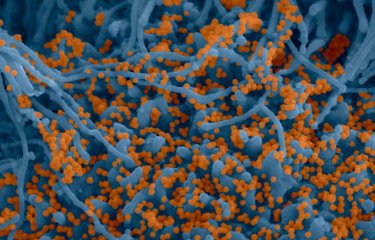-
News | 2022.05.20
The evolutionary history of Latin Americans unveiled
An international publication, led by a researcher from the Institut Pasteur, provides the most comprehensive chronology of genetic adaptations in the Latin American population, before and after the arrival of Europeans.
-
News | 2022.04.28
Understanding how the whooping cough bacterium has evolved in response to vaccination
In a recent study stemming from an international partnership involving several Institut Pasteur scientists, work was carried out on modeling the spatial dynamics and evolution of Bordetella pertussis, the bacterium responsible for whooping cough.
-
News | 2021.11.24
During DNA repair, a protein regulates homology search by reorganizing the genome
Homologous recombination is one of the major pathways for repairing broken DNA. A study by scientists from the Institut Pasteur and ENS Lyon shows how a protein known as cohesin reorganizes the genome into loops to enable this process.
-
News | 2022.01.31
A new method for identifying and typing Shigella strains
A team from the Institut Pasteur and their international colleagues have recently validated a new method that uses the genome of Shigella bacteria to improve identification and typing.
-
News | 2022.01.11
The bacterium causing legionellosis modifies the electrochemical potential of host mitochondria to better replicate
The pathogen Legionella pneumophila modulates the biochemistry of the cell it infects for its own benefit. The bacterium stops mitochondrial respiration, while maintaining the membrane potential of the mitochondria to delay the destruction of the cell.
-
News | 2022.01.17
Institut Pasteur part of an international network for the development of new antimicrobials
Scientists from twelve countries have recently joined forces to develop a program to identify new antimicrobial molecules. The project is based around the IRAADD, an international cooperation network of which the Institut Pasteur is a member.
-
News | 2022.03.07
Cognition in Drosophila flies more developed than previously thought
A study demonstrates the learning and attention capacity of Drosophila, paving the way for a potential model for cognitive science research.
-
News | 2022.06.03
Tackling fungal infections more effectively through surveillance
A review study on the epidemiology of fungal infections in France opens new avenues for research to tackle these diseases more effectively.
-
Report | 2022.04.06
Louis Pasteur: a universal legacy
This year marks the bicentenary of Louis Pasteur's birth. His reputation speaks for itself, with streets and schools named after him in France and across the world. His immense legacy can even be seen in our homes, in the "pasteurized" products derived from one of his discoveries. And it was Pasteur who laid the scientific foundations for the principles of hygiene, which took on such importance...
-
Document de presse | 2024.04.26
WHO and France convene high-level meeting to defeat meningitis
Paralympians join effort to tackle deadly diseaseGlobal leaders highlight the need to defeat meningitis – a leading cause of disability – at a high-level meeting co-hosted by the World Health Organization (WHO) and Government of France, under the High Patronage of Emmanuel Macron, President of the French Republic. The event is taking place on 26-27 April 2024 at the Institut Pasteur and is...


